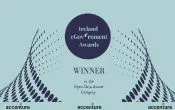This blog is part of a series of posts related to the Cultural Heritage Image Sharing Recommendations produced by the WorldFAIR Project’s Cultural Heritage Image Sharing Working Group. Learn more about DRI’s role in the WorldFAIR Project.
A conversation with Josiline Chigwada, Postdoctoral Research Fellow, University of South Africa and Beth Knazook, DRI’s Research Data Project Manager.
BK: Josiline, thank you so much for agreeing to join our blog series and to share your perspective on the recommendations recently published for improving the interoperability and reusability of Gallery, Library, Archive and Museum (GLAM) collections as data. You were a part of the Working Group that developed the recommendations. Can you tell us a little bit about your background and why you were interested in participating in the group?
JC: It’s my pleasure to be part of this blog series. I am a Librarian by profession, and I have been researching the digitisation of indigenous knowledge taking into consideration the open science movement. Starting from my doctoral thesis, I researched the acquisition, preservation, and dissemination of indigenous knowledge in the digital era. Along the way, I have learned that the FAIR principles (Findable, Accessible, Interoperable, Reusable) and CARE indigenous data governance principles (Collective Benefit, Authority to Control, Responsibility, Ethics) affect how researchers and librarians work with indigenous data and communities. In the digital era, a lot of challenges come into play when talking about documenting cultural heritage. As a result, GLAM institutions have a big role to play in ensuring that everything is done according to ethical considerations and facilitating the involvement of the indigenous peoples from the inception of the project. I was thrilled when I came across the project dealing with cultural heritage image sharing and I decided to join the group to learn more as well as to contribute towards the development of the recommendations.
BK: The recommendations report identified five key areas in which GLAM organisations could better align the delivery of collections images and information with the FAIR data principles, but the report did not always specifically say how those recommendations could be best implemented. Over the next year the DRI is going to be making changes to the Repository to align our practice with these recommendations based on what we interpret to be the best option for us, considering the specifics of our current technical infrastructure, user base, funding and policies, but we recognise that what works for us is not necessarily going to be the best way for others to realise the recommendations. Which is why conversations like these are so important! Do you have any thoughts on the larger context for these recommendations for GLAM organisations in South Africa? Or maybe specifically for the University of South Africa?
JC: Although there might be country or institution-specific ways of implementing the recommendations, the impact of these are generally more or less the same. The open science movement is being embraced by GLAM institutions worldwide, South Africa included. As a result, the FAIR principles would be applied in line with the international standards and having a formal citation model for example, would ensure that the metadata for the images are complete and persistent identifiers would link all the versions of the images. Aiming towards greater transparency in how we create, manage and share image files would assist in ensuring that the images and metadata in GLAM institutions can be used by both machines and humans. Data documentation using README files, for example, would help researchers and users of GLAM institutions to understand how the data came into existence. Therefore, the application of these recommendations would ensure that the cultural heritage images in GLAM institutions comply with the FAIR principles.
Although there might be country or institution-specific ways of implementing the [WorldFAIR] recommendations, the impact of these are generally more or less the same. The open science movement is being embraced by GLAM institutions worldwide, South Africa included.
Josiline Chigwada, University of South Africa
BK: I’ve been thinking a lot about what barriers need to be overcome to make some of our proposed changes possible, like adding options for Rights Statements and Creative Commons licences to the cataloguing workflow. It’s really easy to add the feature but difficult to ensure that people feel comfortable using those licences and don’t persist in using free-text, custom statements only. A lot of our work in that area is really going to have to focus on training and the development of clear guidance, and will take time to see the uptake, but it will also have a big impact. Is there a particular recommendation that you are hoping to see implemented locally? What are the main barriers that might prevent organisations from adopting that recommendation?
JC: The issue of data documentation is a big challenge, especially for non-information professionals who did not do a course in organisation of knowledge. Some of them find it difficult to provide data about data which becomes evident when writing data management plans during the research process, for example. As a result, information professionals working in GLAM institutions have a big role to play in educating people who sometimes donate cultural heritage images to ensure that there is a README file that documents how these were acquired. Therefore, there is a need to ensure the completeness of all the files that are acquired to ensure that researchers understand how the collections were acquired. In the digital era, information professionals should also make use of datasheets for datasets to ensure that the data is reusable. There might be a need to upskill the information professionals working in GLAM institutions to move along with the trending issues in the machine learning and artificial intelligence era.
BK: You’ve made some really good points about the importance of documentation showing the scope and provenance (or origin) of collections information, and we’re exploring the datasheets approach now at DRI. We have a colleague in the WorldFAIR WG who has been working on the concept of datasheets for Europeana as well. Perhaps we can convince him to talk about that in our next blog!
For now, I’ll finish up by asking you something similar to the question I asked Mikala in the previous blog post: Is there any takeaway from the recommendations we published that made you think about the way you work with data differently?
JC: Under licensing and rights, there is an indigenous data governance principle that hasn’t been well understood by most users of cultural heritage collections, the CARE principles of indigenous data governance. These are regarded as people oriented as they show the role of indigenous communities when it comes to research and use of indigenous data. This led to the buzzword “use FAIR with CARE” showing that although there is a need to make the indigenous data findable and reusable, this should be done with indigenous people’s rights in mind. They should be greatly involved to ensure that their voice is heard on the licences to put on the cultural heritage images and in deciding what to share publicly or privately. In summary, indigenous people have the right to control data about their resources, lands, and people and the use of that data should result in tangible benefits to indigenous communities. Therefore, there is a need to create awareness of both the FAIR and CARE principles to researchers, information professionals, and the indigenous communities to use FAIR with CARE when dealing with cultural heritage images in GLAM institutions.
BK: Thank you so much for taking the time to share your perspective on this work Josiline. We’re very lucky to have had your expertise in our working group!

Josiline Chigwada is a postdoctoral research fellow at the University of South Africa (UNISA). She is a librarian with 17 years of experience in academic librarianship. She holds a doctorate in Information Science and a Postgraduate Diploma in Higher Education. She is a member of the Library and Information Association of South Africa (LIASA), the SPARC Africa management committee, the Zimbabwe Library Association (ZIMLA), the Association for Information Science and Technology (ASIS&T), the International Association of Social Science Information Service and Technology (IASSIST), the Zimbabwe Young Academy of Sciences (ZIMYAS), and the Rotary Club of Msasa. She has authored on indigenous knowledge, open science, research data management, academic librarianship, and contemporary issues in library and information science.



